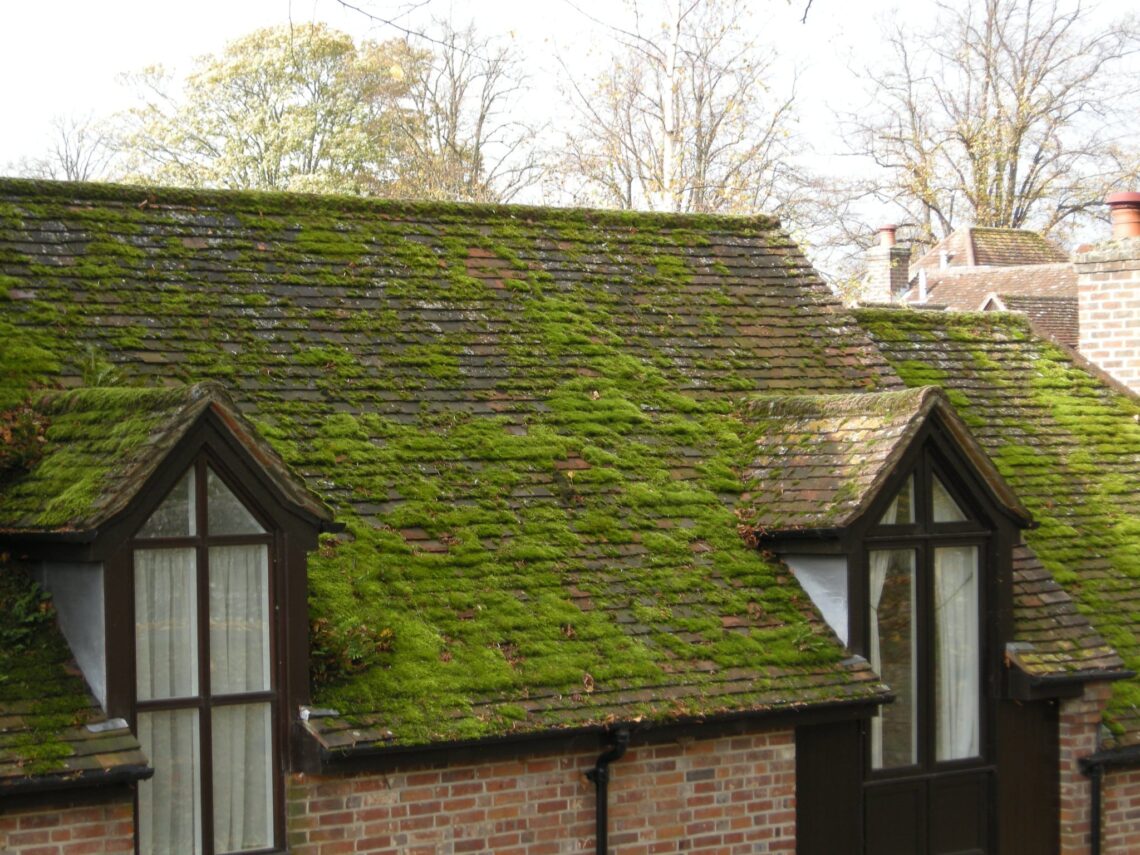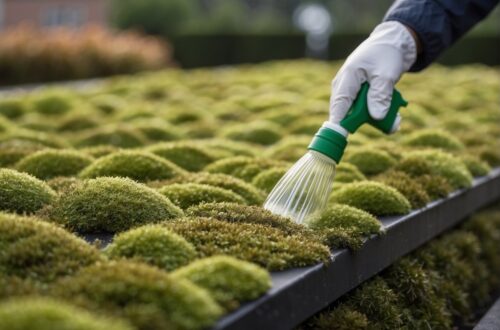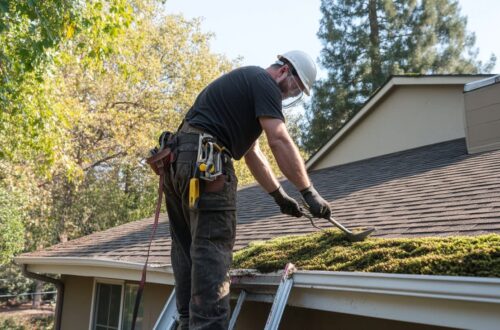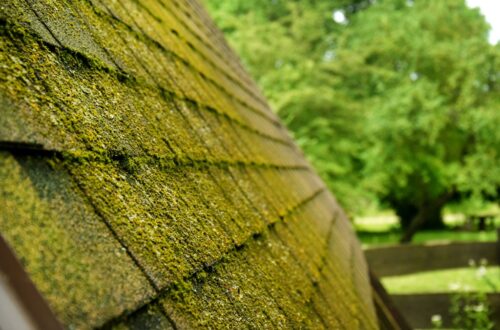Moss growth on a roof is not just an aesthetic issue—it can lead to significant damage if left untreated. Over time, moss can cause shingles to lift, retain moisture, and accelerate roof deterioration. Proper removal and maintenance can prolong the life of a roof while keeping it looking clean and well-maintained. This guide explores the most effective ways to remove moss, prevent regrowth, and maintain a moss-free roof.
Understanding Why Moss Grows on Roofs
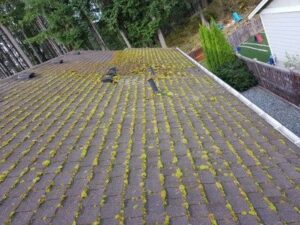 Moss thrives in damp, shaded environments where moisture lingers. Roofs in areas with heavy tree cover, consistent rainfall, and high humidity are particularly vulnerable. The presence of organic debris like leaves and twigs further encourages moss growth by trapping moisture and providing a surface for spores to establish.
Moss thrives in damp, shaded environments where moisture lingers. Roofs in areas with heavy tree cover, consistent rainfall, and high humidity are particularly vulnerable. The presence of organic debris like leaves and twigs further encourages moss growth by trapping moisture and providing a surface for spores to establish.
Shaded north-facing roofs and those with poor drainage are at the highest risk. If moss is left unchecked, it can push under shingles, weaken roofing materials, and even lead to leaks or structural damage. This is why early intervention and regular maintenance are essential.
Safe and Effective Moss Removal Methods
There are several approaches to removing moss, ranging from manual techniques to chemical treatments. Choosing the right method depends on the severity of the moss problem and the type of roofing material.
Manual Removal
For light moss growth, manual removal is a straightforward and effective solution. A soft-bristle brush or a specialized moss removal tool can be used to gently scrape the moss off the shingles. It is important to work from the top of the roof down to avoid damaging the shingles. Applying too much force can loosen or break the roofing material, so care should be taken to avoid unnecessary pressure.
Using Moss Removal Solutions
Chemical solutions specifically designed for moss removal can provide long-term results. These solutions are available in both liquid and powder forms and typically contain ingredients that kill moss while preventing regrowth. When using any chemical treatment, it is crucial to follow the manufacturer’s instructions and apply it in dry conditions to ensure maximum effectiveness.
A common home remedy involves using a mixture of water and household bleach. While bleach can be effective in killing moss, it should be diluted to prevent damage to shingles and surrounding vegetation. A mix of 50% water and 50% bleach, applied with a garden sprayer, can be used to treat affected areas. After letting the solution sit for about 15 minutes, the roof should be rinsed thoroughly with water.
Pressure Washing: Is It Safe?
Many homeowners consider pressure washing as a quick way to remove moss, but it comes with risks. High-pressure water can strip away protective granules from shingles, weaken the roofing structure, and create pathways for leaks. If pressure washing is necessary, it should be done on a low-pressure setting and with a wide spray nozzle to minimize damage. However, for long-term moss control, gentler methods are recommended.
Preventing Moss Regrowth
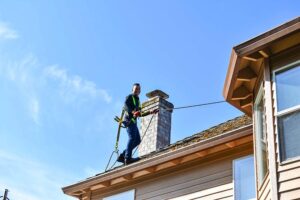 Once moss has been removed, taking preventive measures can help keep the roof clean and moss-free for years. Regular maintenance and proactive steps can greatly reduce the chances of moss returning.
Once moss has been removed, taking preventive measures can help keep the roof clean and moss-free for years. Regular maintenance and proactive steps can greatly reduce the chances of moss returning.
Trimming Overhanging Branches
One of the most effective ways to prevent moss growth is to reduce shade and moisture retention. Trees that cast shadows over the roof should be pruned to allow more sunlight to reach the surface. Increased sunlight helps keep the roof dry, making it less hospitable for moss spores to develop.
Cleaning Gutters and Roof Debris
Clogged gutters can trap moisture and contribute to the conditions that moss thrives in. Keeping gutters clear of leaves and other debris ensures proper drainage and prevents water from pooling on the roof. Regularly sweeping off any accumulated debris from the roof surface also helps eliminate organic material that moss can use as a growing medium.
Installing Zinc or Copper Strips
A long-term preventative measure involves installing zinc or copper strips along the ridge of the roof. When it rains, these metals release ions that create an environment hostile to moss growth. Over time, these ions naturally wash down the roof, inhibiting moss and algae from taking hold. While this method may require some initial investment, it is a highly effective way to maintain a moss-free roof.
Using Moss-Resistant Roofing Materials
For those considering a roof replacement, choosing moss-resistant shingles can provide lasting protection. Some asphalt shingles come with copper or zinc granules embedded in them, offering built-in resistance to moss and algae growth. Investing in such materials can be beneficial, especially in regions with high humidity and frequent rainfall.
Seasonal Roof Maintenance for Long-Term Protection
Seasonal roof inspections and maintenance are key to preventing moss from becoming a recurring issue. Homeowners should check for signs of moss growth, damaged shingles, or excessive moisture buildup at least twice a year, particularly in spring and fall. Promptly addressing any moss regrowth and ensuring proper drainage can save costly roof repairs down the line.
For homeowners who are unsure about handling roof maintenance themselves, hiring a professional roofing contractor is a viable option. Experts can provide thorough inspections, recommend appropriate treatments, and perform maintenance safely and efficiently.

